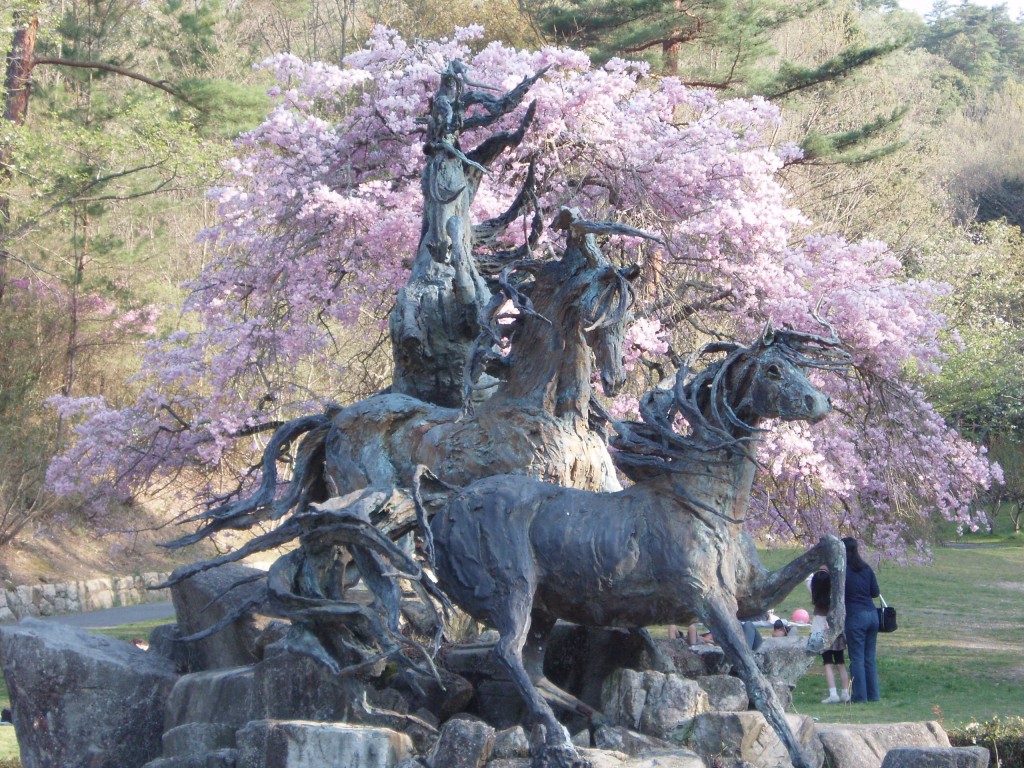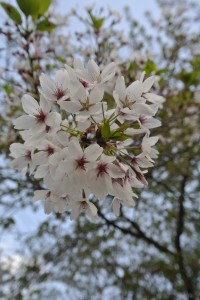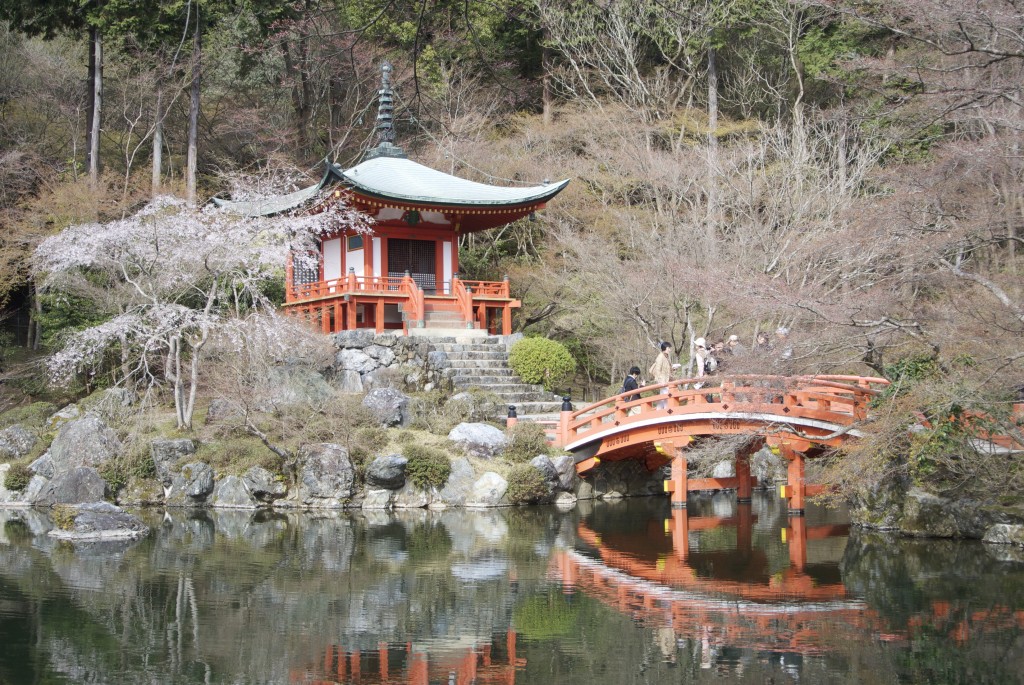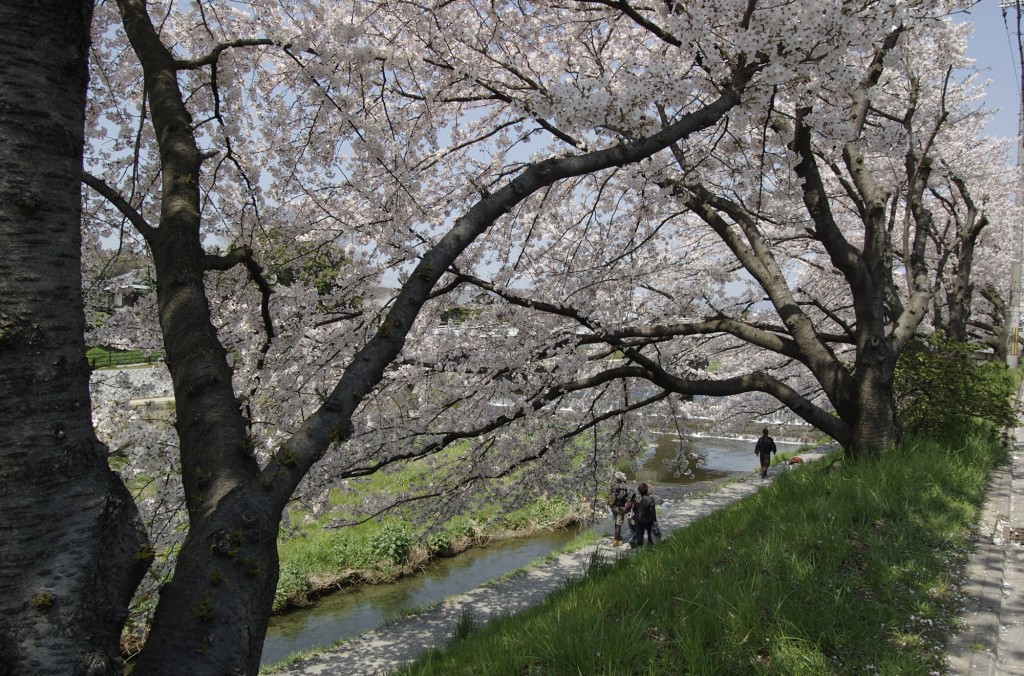
Cherry blossom time, and even the horses feel like celebrating at the Takaragaike park in Kyoto
The cherry blossom by my house are in full bloom at the moment, a reminder of the joys of spring. Celebrating the yearly round is an important part of pagan traditions, which signifies our connection with the seasonal cycle and our rootedness in Mother Earth. Above all, it heightens awareness of the miracle of life; through ritualising our place in the annual round we enrich our consciousness of living.
 The Japanese have long made a cult of cherry blossom. It used to be plum blossom until Heian times, a custom adopted from China, for the reawakening of nature after the long sleep of winter was marked by the miraculous first flowering of the fruit tree. But the Japanese preference for cherry gradually prevailed, driven by an affinity with the evanescence of its blossom.
The Japanese have long made a cult of cherry blossom. It used to be plum blossom until Heian times, a custom adopted from China, for the reawakening of nature after the long sleep of winter was marked by the miraculous first flowering of the fruit tree. But the Japanese preference for cherry gradually prevailed, driven by an affinity with the evanescence of its blossom.
The sentiment is usually associated with the Buddhist view of the transience of life, but Shinto shares a similar outlook. It was after all the great Shinto scholar, Motoori Norinaga (1730-1801), who came up with the compelling notion of mono no aware (the pathos of things) as an underlying current in the culture. It was Motoori too who wrote the poem: ‘If someone asks about the spirit of a true Japanese, point to the wild cherry blossom shining in the sun.’
One way of looking at Shinto is as a celebration of life, and that includes cherry blossom viewing. Here in Kyoto we have a shrine famed for its cherry connection – Hirano Jinja. The precincts contain 400 cherry trees in all, with 50 different types that bloom successively over a month. (Take a look at the shrine’s website to see the loving detail with which the Japanese record these things.)
The shrine has held a cherry blossom festival annually since 985. It began during the reign of Emperor Kazan, and is celebrated now on April 10 each year. In the morning at 11.00 there will be a ceremony at Emperor Kazan’s mausoleum, and in the afternoon at 1.00 a procession will head around the neighboring area.
Cherry, cheri, cherish the moment is the lesson we learn from nature at this precious time of year.
*******************************************************************
For more thoughts on the importance of celebrating the yearly round, click here.

Benten Pond at Daigo-ji in Kyoto in its finest spring garb

The riverside cherry blossom in Kyoto - guaranteed to put a smile on your face

I thought this was very apropos, from the Wikipedia entry for Konohanasakuya-hime:
Apt indeed! It’s a nice summary of the myth and a great example of the structural opposition of perishable plant life versus the permanence of rock. Thanks for bringing that up…
So pretty !!! Thanks.